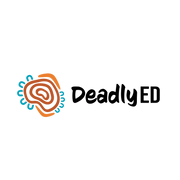Our social media platforms are constantly feeding us with information about upcoming events of significance, things that happened yesterday, today, decades ago, and a really, really long time ago. And with more and more First Nations content creators emerging on prominent platforms like Facebook, Instagram and TikTok, we find that our feeds are delivering more content than ever that educates us about First Nations peoples, histories, and cultures. With these platforms allowing us to like, save, reshare posts and contribute to conversations with an online community – we find ourselves growing our own understanding of concepts and ideas that matter to First Nations peoples. But as educators we have to ask ourselves – what are we doing with this information and how can I share this with my learning community at school?
The digital age has proved useful in reminding us about dates of historical, social or cultural significance across social media in the form of posts, digital resources and short videos. But the challenge educators must confront is how they intend to use such content in appropriate and meaningful ways in their classroom. There is no doubt that educators have proved that they are able to gather and distribute learning materials around both NAIDOC and Reconciliation weeks each year as a plethora of lesson activities surface online from First Nations educators.
But it seems that a number of other significant and widely-unknown events fall by the wayside. So, what can educators do? Reflecting on our own practice is key.
Go beyond the like
If you’ve come across some useful content, think about how you will share it with your learning community;
-
Will you attach it in an email to inform others?
-
Will you include it in a weekly school assembly and share some insight about the context?
-
Will you write it in your teacher planner to refer back to at a later time?
-
Have you made a note in your teaching program to include it next time?
-
If you’ve come across something that is new information to you, will you go further and do more research on the topic?
We challenge our students to become lifelong learners, so we must hold ourselves up to the same expectation. It is within our role as educators to facilitate knowledge and understanding of First Nations peoples, cultures, and histories. Reflect upon what you’re already doing within your learning community and look for any gaps where you could improve your approach.
Take your perspectives further
If you’ve made your learning community aware of an event by way of an email or in a public forum like a school assembly, are you taking it back to the classroom?
-
Will you facilitate discussions about the concept or idea in a Yarning Circle?
-
Will you dedicate a whole lesson or create a lesson sequence to ensure your students understand the purpose and significance of such events? If so, are your learning materials appropriate and written from the perspective of First Nations people?
-
Does the event present an opportunity for you to invite key stakeholders of your learning community to your school – your First Nations parents, carers, groups, and organisations?
Learning about First Nations people should be accessible for every student in this country, so the onus of providing this education is not just on First Nations educators. Effective change can happen in the classroom with the help of all educators.
To help out our deadly educators out there, we will be releasing a series of articles relating to significant events that honour and celebrate First Nations peoples so that teachers can feel empowered to implement them as learning tools within their classroom.





